
BusinessEnglish_Nikolaenko
.pdf20.can’t match the competition
21.to economize
Exercise 21. Complete the short dialogues below using the following phrasal verbs:
get on to |
come up with |
come in for |
put up with |
back out of |
|
|
get down to |
live up to |
put in for cut back on |
keep up with |
|
||
1. |
Has the restructuring of the production department speeded things up at all? |
|||||
|
Not really. I’m afraid it failed to ................ |
expectations. |
|
|||
2. |
How’s the budget for this year looking? |
|
|
|||
|
I think we’re going to have to ................ |
spending, I’m afraid. |
|
|||
3. |
We really need to consult our legal advisors on this one. |
|
||||
|
OK, I’ll ................ |
them straightaway. |
|
|
|
|
4. |
You know, in this industry it’s |
sometimes |
hard to ................ |
all the latest |
||
|
developments. |
|
|
|
|
|
|
But that’s what I’m paying you for! |
|
|
|
||
5. |
You know, I’m sorry we ever got into this project in Hong Kong. |
|
||||
|
Well, its too late to it now. |
|
|
|
||
6. |
I hear you’ve ................ |
a promotion. |
|
|
|
|
|
Yes. After eight years in this place, I think it’s about time they gave me my own |
|||||
|
department. |
|
|
|
|
|
7. |
I think everyone’s here who’s supposed to be here. |
|
|
|||
|
OK, let’s |
................ business. |
|
|
|
|
8.Look, if our team can’t find a solution to this problem, no one can. OK, go away and see what you can …………….. .
9.A lot of people were very unhappy about the way they handled the redundancies.
I know. They’ve ................ |
quite a lot of criticism over that. |
|
10. If you want to stay in this job, you’ll have to ................ |
a fair amount of hassle, I’m |
|
afraid. |
|
|
That’s OK. I’m getting fairly used to it by now. |
|
|
Exercise 22. Now, without referring back to the previous exercise, try to match up the halves of the following word partnerships:
1. |
come up |
a. |
to business |
2. |
cut back |
b. |
for a promotion |
3. |
get on |
c. |
for criticism |
4. |
keep up |
d. |
to expectations |
5. |
back out |
e. |
with a lot of hassle |
6. |
put in |
f. |
with a solution |
7. |
get down |
g. |
of an agreement |
8. |
come up |
h. |
to the account department |
9. |
come in |
i. |
with the latest development |
10. put up |
j. |
on spending |
|
71
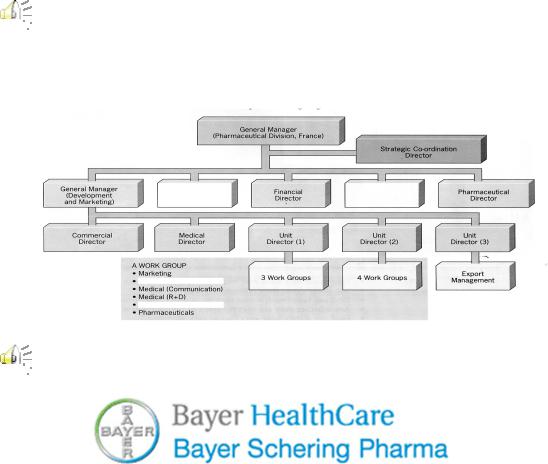


 Exercise 23. Schering is an international company engaged in agricultural and pharmaceutical activities. The French pharmaceutical subsidiary has recently changed its organizational structure. Listen to a manager describing the new structure to some colleagues from other parts of the organization and complete the organigram:
Exercise 23. Schering is an international company engaged in agricultural and pharmaceutical activities. The French pharmaceutical subsidiary has recently changed its organizational structure. Listen to a manager describing the new structure to some colleagues from other parts of the organization and complete the organigram:


 Exercise 24. Listen again and answer these questions:
Exercise 24. Listen again and answer these questions:
1.Which person on the chart made the presentation?
2.Who does he report to?
3.What are the Unit Directors responsible for?
4.What three advantages of the work groups does he mention?
Exercise 25. Invent your own company and describe its organizational structure using the following verbs:
The most common verbs for describing structure are:
consists of |
contains |
includes |
|
is composed of |
is made up of |
is divided into |
|
Other verbs frequently used to describe company organization include:
to be in charge of
to support or to be supported to be accountable to
to be responsible for
to assist or to be assisted
72
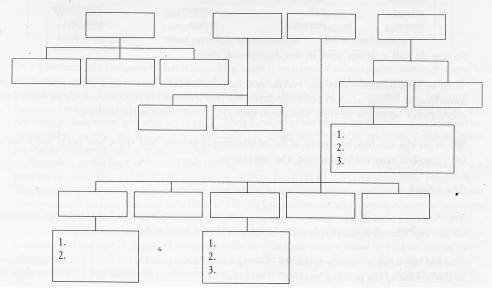
Use the following questions to expand the topic:
1.What does your company do?
2.What is it called?
3.What kind of public image do you have?
4.How many people do you employ?
5.Where are your headquarters?
6.Do you have offices in other countries? If so, where?
7.What is your turnover, market share and net profits? Who is your main competitor?
8.Are you growing, shrinking or holding steady?
9.What are your most promising products and/or markets?
10.What problems are you having and how are you dealing with them?
Exercise 26. Read the whole text and then complete the organization chart:
I think we have a fairly typical organization for a manufacturing firm. We’re divided into Finance, Production, Marketing and Human Resources departments.
The Human Resources department is the simplest. It consists of two sections. One is responsible for recruitment and personnel matters, the other is in charge of training.
The Marketing department is made up of three sections: Sales, Sales Promotion, and Advertising, whose heads are all accountable to the marketing manager.
The Production department consists of five sections. The first of these is Production Control, which is in charge of both Scheduling and Materials Control. Then there’s Purchasing, Manufacturing, Quality Control, and Engineering Support. Manufacturing contains three sections: Tooling, Assembly, and Fabrication.
Finance is composed of two sections: Financial Management, which is responsible for capital requirements, fund control, and credit, and Accounting.
73
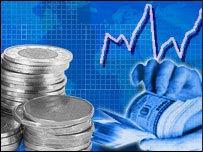
UNIT 8: MONEY MATTERS
Exercise 1. For each of the six questions choose one correct answer:
1.‘I’ve got money in the bank again, so now I’m back in the ________.’
a.red
b.black
c.yellow
d.green
2.Choose the more formal alternative for the word in bold. ‘That picture cost me twenty quid.’
a.dollars
b.pounds
c.pence
d.cents
3.If you haven’t got any money, you are ________.
a.broken
b.broke
c.smashed
d.shattered
4.How would you say the following amount of money? £1276
a.One thousand and two hundred and seventy six pounds.
b.One thousand, two hundred and seventy six pounds.
c.One thousand and two hundred, seventy six pounds.
d.One million, two hundred and seventy six pounds.
5.“It costs a fiver”. In Britain this means ________.
a.fifty pence
b.five thousand pounds
c.five hundred pounds
d.five pounds
6.The following are all types of money. Which one do you borrow when you want to buy a house?
a.pocket money
b.mortgage
c.allowance
d.grant
Exercise 2. Read the information about the functions and characteristics of money and do the exercises below:
THE FUNCTIONS AND CHARACTERISTICS OF MONEY
American businesses produce, market, and distribute goods and services. Money makes it possible for businesses to obtain what they need from suppliers and for consumers to obtain goods. Money is defined as anything customarily used as a medium of exchange, a unit of accounting, and a store of value. The basis of the market economy is voluntary exchange. In the American economy, the exchange usually involves money in return for a good or service.
74
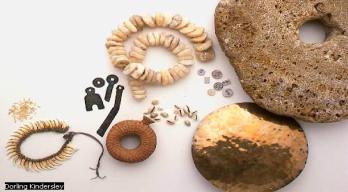
The Functions of Money |
|
|
|
|
|
||
Most |
|
|
Americans |
||||
think |
of |
money |
as |
bills, |
coins, |
||
and |
|
checks. |
|
Historically, |
|||
and |
in |
other |
|
economies, |
|||
money might be |
shells, |
gold, |
or |
||||
even |
|
goods |
such |
as |
sheep. |
||
Economists |
identify |
money |
|||||
by the presence |
or |
absence |
of |
||||
certain |
|
|
|
functions. |
|||
Anything that is |
used |
|
as |
a |
|||
medium |
of |
exchange, a unit |
|||||
of accounting, and a store of value is considered money. For example, Native Americans used wampum - beads made from shells. Fijians have used whales’ teeth.
There are three functions of money.
Medium of Exchange. To say that money is a medium of exchange simply means that a seller will accept it in exchange for a good or service. Most people are paid for their work in money, which they then can use to buy whatever they need or want. Without money people would have to barter - exchange goods and service for other goods and services.
Suppose you worked in a grocery store and were paid in groceries because money did not exist. To get whatever you needed, such as clothes and housing, you would have to find people who have the goods that you want. In addition, those people would have to want the exact goods - in this case, groceries - that you have. Barter requires what economists call a double coincidence of wants. Each party to a transaction must want exactly what the other person has to offer. This situation is rare. As a result, people in societies that barter for goods spend great amounts of time and effort making trades with one another. Bartering can work only in small societies with fairly simple economic systems.
Unit of Accounting. Money is the yardstick that allows people to compare the values of goods and services in relation to one another. Money that is a measure of value functions in this way as a unit of accounting. Each nation uses a basic unit to measure the value of goods, as it uses the foot or meter to measure distance. In the United States, this base unit of value is the dollar. In Japan, it is the yen; in France, the franc. An item for sale is marked with a price that indicates its value in terms of that unit.
Using money as the single unit of accounting provides a simple and convenient way to compare the values of various items. By using money prices as a factor in comparing goods, people can determine whether one item is a better bargain than another. A single unit of accounting also allows people to keep accurate financial records - records of debts owed, income saved, and so on. Businesspeople can better calculate their profits and losses over the years by using a single money unit of accounting.
Store of Value. Money also serves as a store of value. You can sell something, such as your labor, and store the purchasing power that results from the sale in the form of money for later use. People usually receive their money income once a week, once every two weeks, or once a month. However, they usually spend their income at different times during a pay period. To be able to buy things between paydays, a person can store some of his or her income in cash and some in a checking account. It is important to note that in periods of rapid and unpredictable inflation, money is less able to act as a store of value.
75
The Types and Characteristics of Money
Anything that people are willing to accept in exchange for goods can serve as money. At various times in history, cattle, salt, animal hides, gems, and tobacco have been used as mediums of exchange. Each of these items has certain characteristics that it better or worse than others for use as money. Cattle, for example, are difficult, to transport, but they are durable. Gems are easy to carry, but they are not easy to split into small pieces to use.
The table below lists the major characteristics that to some degree all items used as money must have. Almost any item that meets most of these criteria can be and probably has been used as money. Precious metals, however, particularly gold and silver, are especially well suited as mediums of exchange, and have often been used as such throughout history. It is only in more recent times that paper money has been widely used as a medium of exchange.
Mediums of exchange such as cattle and gems are considered commodity money. They have a value as a commodity, or good, aside fromtheir value as money. Cattle are used for food and transportation. Gems are used for jewelry.
Representative money is money backed by - exchangeable for - some commodity, such as gold or silver. It is not in itself valuable for nonmoney uses, but it can be exchanged for some valuable item. Like commodity money, the amount of representative money circulation, or in use by people, is limited because it is linked to some scarce good, such as gold. At one time the United States government issued representative money in the form silver and gold certificates. In addition, private banks accepted deposits of gold or silver and issued paper money, called bank notes. These were a promise to convert the paper money into coin or bullion on demand. The banks were supposed to keep enough gold or silver in reserve - on hand to redeem their bank notes. Often, they did not.
Today all United States money is fiat money. Its face value occurs through government fiat, or order. It is in this way declared legal tender.
Characteristic |
Description |
|
|
Durable |
Money must be able to withstand the wear and tear of being |
|
passed from person to person. Paper money lasts on the |
|
average of only one year, but old bills can be easily replaced. |
|
Coins, in contrast, last for years. |
Portable |
Money can be carried around easily. Though paper money is |
|
not very durable, people can easily carry large sums of paper |
|
money. |
Divisible |
Money must be easily divided into small parts so that |
|
purchases of any price can be made. Carrying coins and small |
|
bills makes it possible to make purchases of any amount. |
Stable in value |
Money must be stable in value. Its value cannot change rapidly |
|
or its usefulness as a store of value will decrease. |
Scarce |
Whatever is used as money must be scarce. That is what gives |
|
it value. |
Accepted |
Whatever is used as money must be accepted as a medium of |
|
exchange in payment for debts. In the United States, |
|
acceptance is based on the knowledge that others will continue |
76
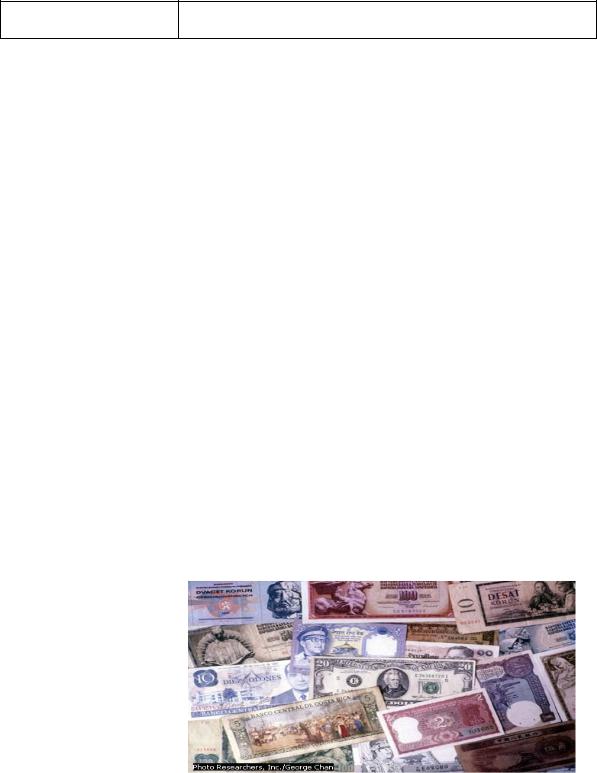
to accept paper money, coins, and checks in exchange for desired goods and services.
Exercise 3. After reading the text in Exercise 2, fill in the missing word or words:
Money, regardless of what form it takes, has three major functions. When sellers are willing to accept it as payment for goods or services, money functions as a 1)________
_________ _________. As a 2)___________ __________ __________, money allows people to compare the values of various items and to keep accurate records. Money in a convenient form serves as a 3)__________ __________ _________, allowing people to save for the future.
Whatever is used as money must be 4)____________________, which is what gives it its value. Money, to be easy to handle and use, must be 5)________________ and 6)_________________ into small parts. Finally, money must have 7)_______________________ value and be 8)_________________ to withstand normal use.
Certain items such as furs or minerals used in barter are referred to as 9)____________________ money. Currency backed by some 10)___________________
such as gold is called 11)__________________ money. In the United States and other countries, government decree creates 12)____________________ money, also known as 13)________ _________. This type of money is backed mainly by society’s 14)_________________in its value.
Exercise 4. Read the following text and summarize the notion of money and its basic types:
TYPES OF MONEY IN THE UNITED STATES
Money Is More Than Cash
When you think of money, you may think only of paper bills and coins. What does it mean to have “money in the bank”?
Money and Near Moneys
Money in use today consists of more than just currency. It also includes deposits in checking and savings
accounts in banks and savings institutions, plus certain other investments.
Currency. All United States coins in circulation today are token coins. The value of the metal in each coin is less than its exchange value. A quarter, for example,
consists of a mixture of copper and nickel. If you melted down a quarter - which is illegal - the value of the resulting metal would be less than 25 cents. The Bureau of the Mint, which is part of the Treasury Department, makes all coins. Of the currency in circulation in the United States today, about 9 percent is in coins.
77
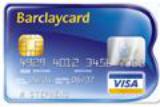
Most of the nation’s currency is in the form of Federal Reserve notes. Federal Reserve banks issue these notes. The Bureau of Printing and Engraving, also part of the Treasury Department, prints all Federal Reserve notes. They are issued in denominations of $1, $5, $10, $20, $50, and $100. The Treasury Department has also issued United States notes in $100 denominations only. These bills have the words United States Note printed across the top and can be distinguished from Federal Reserve notes by a red Treasury seal. United States notes make up less than 1 percent of the paper money in circulation. Both Federal Reserve notes and United States notes are fiat money or legal tender.
Checks. A checking account is money deposited in a bank that a person can withdraw at any time by writing a check. The bank must pay the amount of the check when it is presented for payment, that is, on demand. Such accounts used to be called demand deposits. Today we call these checkable deposits, and a variety of financial institutions offer them. Commercial banks used to be the only financial institutions that could offer checkable accounts. Today all thrift institutions - mutual savings banks, savings and loan associations (S&Ls), and credit unions - offer checkable deposits.
Credit Cards and Debit Cards. Even though many people use their credit cards to purchase goods and services, the credit card itself is not money. It does not act as a unit of
accounting nor as a store of |
value. The use of your credit |
||||
card is really a loan to you by |
the issuer of the card, whether it |
||||
is a bank, retail store, gas |
company, or American Express. |
||||
Basically, |
then, |
credit card |
“money” represents |
a future |
|
claim on money that you will |
have later. |
Credit cards defer |
|||
rather |
than |
complete |
transactions |
that |
ultimately |
involve the use of money. |
|
|
|
||
The debit card automatically withdraws money from a checkable account. When you use your debit card to purchase something, you are in effect giving an instruction to your bank to transfer money directly from your bank account to the store’s bank account. The use of a debit card does not create a loan. Debit card “money” is similar to checkable account money.
Near Moneys. Numerous other assets are almost, but not exactly, like money. These assets are called near moneys. Their values are stated in terms of money, and they have high liquidity in comparison to other investments, such as stocks. Near moneys can be turned into currency or into a means of payment, such as a check, relatively easily and without the risk of loss of value.
For example, if you have a bank savings account, you cannot write a check on it. You can, however, go to the bank and withdraw some or all of your funds. You can then redeposit it in your checking account or take some or all of it in cash.
Time deposits and savings-account balances are near moneys. Both pay interest, and neither can be withdrawn by check. Time deposits require that a depositor notify the financial institution within a certain period of time, often 10 days, before withdrawing money. Savings accounts do not usually require such notification.
The Money Supply
How much money is there in the United States today? That question is not so easy to answer. First, the money supply must be defined and agreed upon. Currently, two basic definitions are used, although others exist. The first is called M1 and the second M2. Both definitions include all the paper bills and coins in circulation. M1, the narrowest definition of the money supply, consists of moneys that can be spent immediately and against which checks can be written. It includes currency, traveler’s checks, and checkable deposits. A
78
broader definition of the money supply, M2, includes all of M1, plus such near moneys as money market mutual fund balances and Eurodollars.
Exercise 5. After reading the text in Exercise 4, fill in the missing word or words:
Most of the nation’s currency is in the form of (1)_____________________ and
(2)___________ ___________ _______ or_______ ________ _______. Money is also in the form of (3)___________ __________ that a person can draw against for purchases. Today, these accounts are also called (4)_____________ ____________. Since the 1980s, commercial banks and (5)__________ ____________ offer these accounts along with many other financial services.
Money can be represented by (6)______________ ________________, which provide “loans” to users. (7)__________ __________, on the other hand, simply withdraw money that a person already has in an account. However, most people do not like to lose the
(8)_____________ they enjoy when writing checks. Personal assets such as stocks and bonds are called near money because they have high (9)___________ for their owners. (10)_______________ deposits and (11)__________ ___________ are two other examples of near money.
The money supply is designated as M1 and M2. M1 includes all currency, (12)____________ __________, and checking accounts. M2 is a broader definition of the money supply and includes all of Ml plus (13)________ _________ __________
________ and (14)_________________.
Exercise 6. Insert the following words in the appropriate space:
bonds commercial |
monetarist prices tight velocity |
|
Following the (1) ........... |
argument that the average level of (2) |
........... and wages is |
determined by the amount of money in circulation, and its (3)........... |
of circulation, many |
|
central banks now set money supply targets. By increasing or decreasing the money supply, the central bank indirectly influences interest rates, demand, output, growth, unemployment and prices. The central bank can reduce the reserves available to (4)
........... banks by changing the reserve requirements. This reduces the amount of money that banks can create and makes money (5)........... or scarce. Alternatively, the central bank can engage in what are called open market operations, which involve selling shortterm government (6) ………… (such as three-month Treasury bills) to the commercial banks, or buying them back.
Exercise 7. Now do the same with the paragraph:
credit |
inflation output |
unemployment interest rates |
the exchange |
|
rate |
aggregate demand |
|
||
When money is tight, |
|
|
||
|
1. |
...........… rise, |
because commercial banks have to borrow |
at a higher rate |
|
|
on the inter-bank market. |
|
|
|
2. |
.............. falls, because people and businesses borrow less at higher rates. |
||
3. .............. falls, because people and businesses buy less, as they have less money.
79
4. .............. falls too, because with less consumption, firms produce less.
5. .............. rises, because companies are producing and selling less, and so require less labour.
6. ...........… falls, because there is less money in circulation.
7. ...........… will probably rise, if there is the same demand but less money, or if there is higher demand, as foreigners take advantage of the higher interest rates to invest in the currency. Increasing the money supply, by making more reserves, available, has the opposite effects.
Exercise 8. Choose the correct alternative to complete each sentence:
1. |
Money in notes and coins is called |
|
|
|
a. cash |
b. capital |
c. reserves |
2. |
The dollar, the mark and the yen are all |
|
|
|
a. currencies |
b. funds |
c. monies |
3. |
Money borrowed from a bank is a |
|
|
|
a. deposit |
b. income |
c. loan |
4. |
Borrowed money that has to be paid back constitutes a |
||
|
a. debt |
b. fund |
c. subsidy |
5. |
All the money received by a person or a company is known as |
||
|
a. aid |
b. income |
c. wages |
6. |
The money earned for a week’s manual work is called |
||
|
a. income |
b. salary |
c. wages |
7. |
The money paid for a month’s (professional) work is a |
||
|
a. loan |
b. salary |
c. wages |
8. |
Money placed in banks and other savings institutions constitutes |
||
|
a. capital |
b. deposits |
c. finance |
9. |
Money paid by the government or a company to a retired person is a |
||
|
a. pension |
b. rebate |
c. subsidy |
10. |
The money that will ultimately be used to pay pensions is kept in a |
||
|
a. budget |
b. deposit |
c. fund |
11. |
The money needed to start a company is called |
|
|
|
a. aid |
b. capital |
c. debt |
12. |
The money paid to lawyers, architects, private schools, etc. is called |
||
|
a. fees |
b. instalments |
c. wages |
13. |
Regular part payments of debts are called |
|
|
|
a. deposits |
b. loans |
c. instalments |
80
